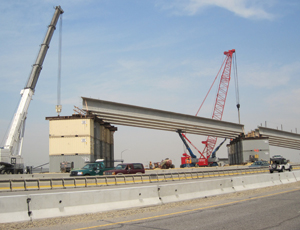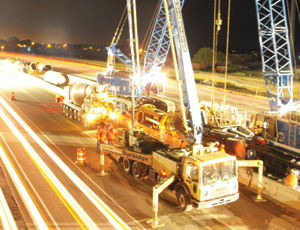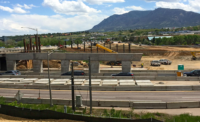...the I-215 overpass in Davis County (over 4 miles in length) to accommodate four lanes, including one express lane in each direction and to provide enough shoulder width for a future fifth lane.


The project is being constructed by Kiewit-Clyde, a joint-venture between Omaha-based Peter Kiewit & Sons and W.W. Clyde & Co of Springville, Utah.
Crews will replace bridges at Beck Street/I-15 overpass and southbound U.S. 89 overpass and demolish two bridges to be replaced by a new bridge at 1100 North. The U.S. 89 bridge is being built via Accelerated Bridge Construction methods and will be moved into place via Self-Propelled Modular Transports (SPMTs). The other bridges will be built via more traditional cast-in-place methods using drilled shafts and deep soil mixing.
The $115.4-million project started in October 2008 and is slated for completion by October 2010.
Pioneer Crossing; Lehi / I-15 American Fork Interchange
Utah County
The Pioneer Crossing project, which is also being constructed by a Kiewit-Clyde joint venture, begins at American Fork Main Street, crosses over I-15, and continues west to Redwood Road. This $172.1-million job began last November and won’t conclude until October 2010.
The project encompasses six miles of new highway, three bridges, and 21,652 lf of 60 in 200 psi waterline running alongside the alignment. One unique aspect of Pioneer Crossing is the inclusion of the second Diverging Diamond Interchange ever built in the United States. This bridge, with 194-ft concrete girders, will be built using Accelerated Bridge Construction methods. The bridges are being constructed adjacent to I-15 and when finished, will be moved into place using SPMTs.
Mike Seare of Kiewit says both projects remain on schedule, despite both being built in areas with heavy traffic volumes.
“It’s definitely challenging working during times of high traffic,” says Seare. “Our crews are constantly emphasizing safety and being aware of what’s going on around them. These are very complex projects we’re building.”


Post a comment to this article
Report Abusive Comment